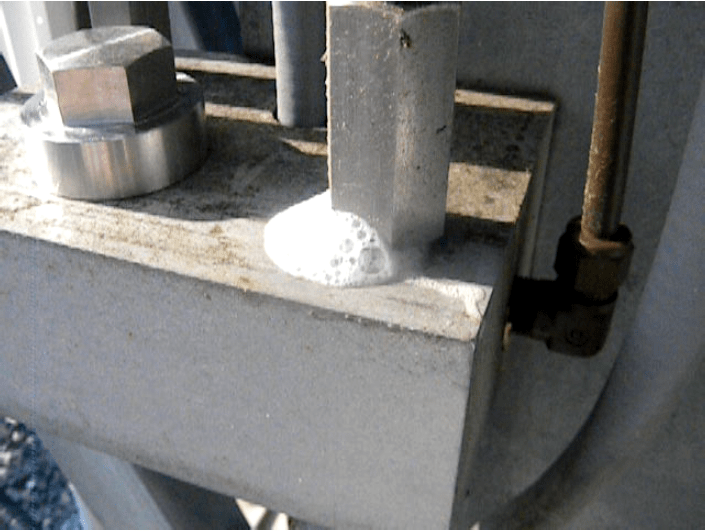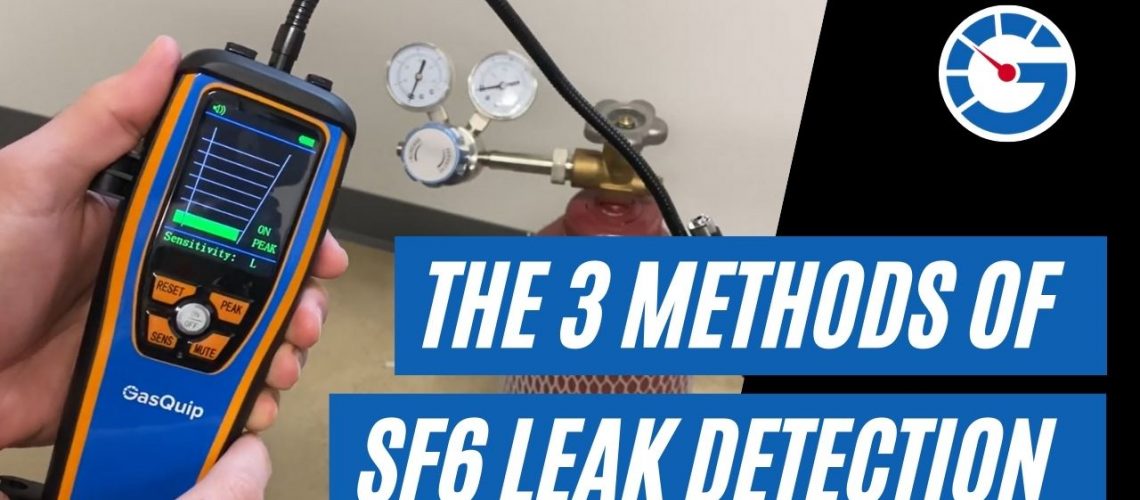
When it comes to finding an SF6 leak, many factors can be at play that prevent the detection of the gas. Things such as the temperature outside, fog & cloud coverage, the pressure of the breaker, and equipment reliability can cause delays in leak detection. There are 3 main ways of detecting SF6 leaks, and in this article we will discuss the pros and cons of each method.
SF6 Camera
The use of an SF6 camera is arguably the best method of finding leaks. A camera such as the FLIR GF306 has the potential to pinpoint very small leaks (up to 0.5lb SF6 annually). The great thing about using a camera is that there is no guess work – just point it at an area where you believe there to be a leak and let the camera record the observations. This technology has come a long way in a matter of a few decades. Just look at what they looked like back in 2005:

A few drawbacks of using cameras is that they are very expensive. Most models these days are $30,000 or higher, with some of the higher end models fetching closer to $80,000. Luckily you can rent these type of cameras from a rental companies like ECP Solutions, who specialize in power test equipment. Other limiting of factors of using a camera can be the need for low wind speeds, clear skies, and a sunny day. Unless your searching for leaks frequently, you may be better off with another means of detection.
Handheld Gas Detectors (Sniffers)
This type of leak detection is the most common due to the low cost and high accuracy of sniffers these days. With a battery life up to 8 hours, sensitivity ranges, and a lightweight build, modern sniffers are able to handle most detection jobs. Models like our Infrared SF6 Leak Detector can be purchased online.
The advantage of these is that they are very simple to use: Just turn them on, point the nozzle and move it around. They can also access areas that a normal camera may not have access to, such as a cabinet or in between metal fixtures. The downside of using these is that they can sometimes be too sensitive. If wind starts to pickup and the gas leak is being distributed all around the area, it can be hard to pinpoint exactly where the source of the leak is. Other drawbacks include dusty environments causing issues with the sensors, and only being able to check grounded components while equipment is in service.
Bubble Mix (Snoop)
Similar to finding a leak in a tire, a household soap detergent and some water can be used to find an SF6 leak. All you need is a spray bottle, and a mixture of 20:1 water and soap. The solution can be sprayed onto flanges, tubing, or porous castings to identify the leak. If you see extra bubbles continuing to form after the mixture settles, then you have found your leak.

The advantage of soapy water is that it is the cheapest option and can be done by anyone. Some downsides of this method include not being able to spray on live parts while in service, unable to use it when temperatures below freezing, and having to wait to spot a bubble. Otherwise, this method is a very accurate way to identify leaks. We recommend using a sniffer first to pick out a general area, and then hit it with the soapy water to narrow it down.
Comparison
| SF6 Camera | Handheld Gas Detector | Soapy Water | |
| Benefits | Single best leak detection method | Low cost instrument, high sensitivity, little experience required | Pinpoint accuracy, cheap |
| Drawbacks | Cost, weather conditions | False positives, weather conditions | Grounded components only, weather conditions |
Have a question about SF6 equipment? Reach out to us on our Contact Us Page.

